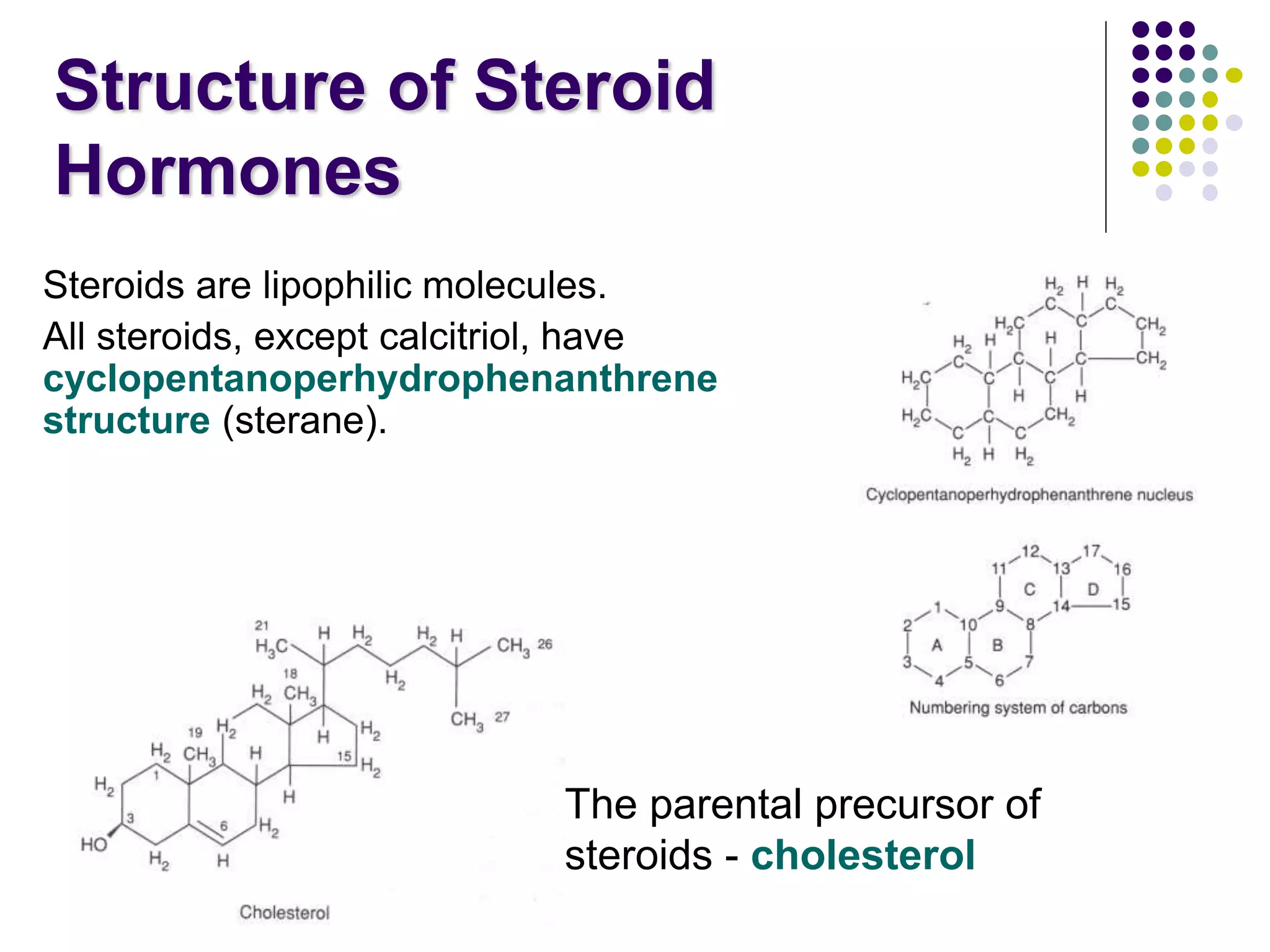There are four major classes of hormones, including steroid hormones. Steroid hormones are derived from cholesterol and include progestins, glucocorticoids, mineralocorticoids, androgens, and estrogens. Steroid hormones are not water soluble and must bind to transport proteins in the bloodstream. They act via intracellular receptors after passing through cell membranes due to their lipophilic nature. The adrenal cortex and gonads produce steroid hormones through pathways involving enzymatic modification of cholesterol and its derivatives.





























































![ The glucocorticoids, such as hydrocortisone (also known as
cortisol), are biosynthesized and released under the influence
of peptide hormones secreted by the hypothalamus
(corticotropin releasing factor (CRF))and anterior pituitary
(ACTH) (adenohypophysis) to activate the adrenal cortex (the
hypothalamic-pituitary-adrenal [HPA] axis).
On the other hand, the secretion of the mineralocorticoids,
corticosterone and aldosterone, is under the influence of the
octapeptide, angiotensin II. Angiotensin II is the active
metabolite resulting from the renin-catalyzed proteolytic
hydrolysis of plasma angiotensinogen to angiotensin I in the
blood.](https://image.slidesharecdn.com/steroids-210306040031/75/Steroids-medicinal-chemistry-pharm-d-3rd-year-62-2048.jpg)









































